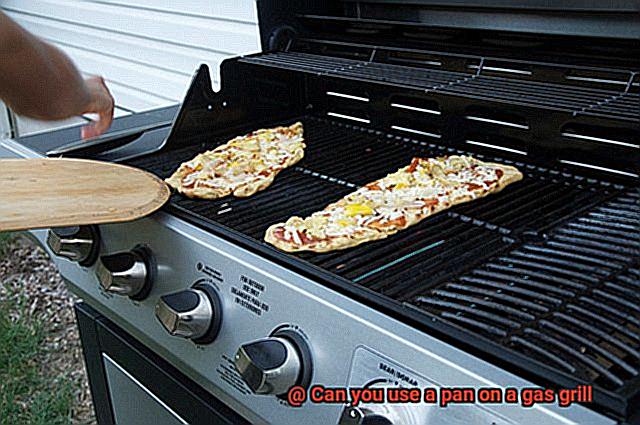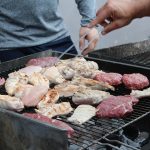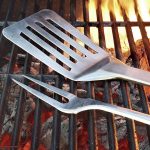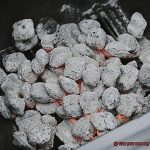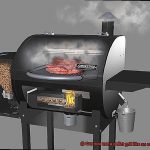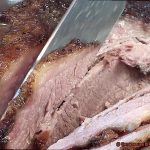Are you craving a sizzling steak or some grilled veggies but worried about them falling through the grates of your gas grill? Fear not, my friend. The answer to your culinary conundrum is simple: use a pan on your gas grill.
Not only does using a pan on a gas grill give you more cooking options, but it also makes grilling delicate foods like fish, eggs, and small vegetables much easier. Plus, you can cook multiple dishes at once on separate pans, saving time and making your BBQ more efficient.
But before you start throwing any old pan on the grill, there are a few things to consider. What type of pan should you use? How do you set up your grill for optimal heat distribution? And what temperature should you be cooking at?
Don’t worry – we’ve got all the answers for you in this blog post. We’ll guide you through everything you need to know to become a pro at using a pan on your gas grill.
So, get ready to take your grilling game to the next level and impress all your friends with perfectly cooked meals. Keep reading and let’s fire up that gas grill.
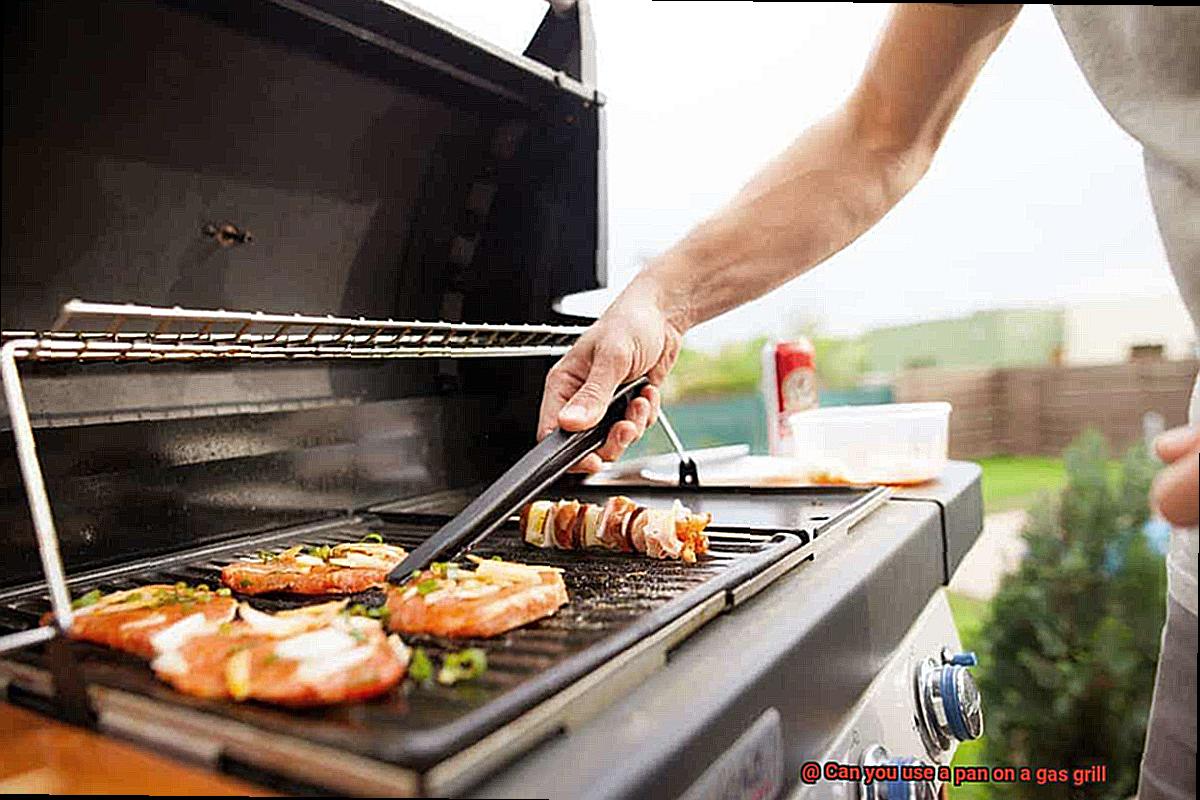
Contents
What is a Gas Grill?
A gas grill might just be the perfect solution for you. Gas grills are outdoor cooking appliances that use propane or natural gas as fuel to cook food. They offer a variety of benefits that make them a popular choice for outdoor cooking enthusiasts.
One major advantage of gas grills is their ability to be turned on and off quickly, allowing for spontaneous outdoor cooking or precise temperature control.
Unlike charcoal grills, which require time to heat up and cool down, gas grills can be ready to cook on within minutes. This makes them the ideal option for busy families or anyone who wants to spend less time prepping and cleaning up after cooking.
Gas grills come in various sizes and shapes, from small portable models to large built-in units for outdoor kitchens. They typically have burners that heat up the grates where the food is placed to cook.
Many models also have built-in thermometers and temperature gauges that let you monitor the heat of the grill while you cook. Plus, they offer a range of features such as side burners, warming racks, and rotisserie attachments that allow for more versatility in outdoor cooking.
But what about using a pan on a gas grill? Cast iron skillets are a popular choice because they are durable and can withstand high heat levels, making them ideal for cooking on a gas grill. They also distribute heat evenly, which helps to prevent hot spots and ensure that your food cooks evenly.
Disposable aluminum foil pans are another option that is lightweight and inexpensive, making them great for outdoor cooking. However, it’s important to avoid pans with plastic handles or coatings and thin or lightweight pans, as they may melt or buckle under high heat.
Types of Pans Suitable for Use on a Gas Grill
When it comes to grilling, using a pan on a gas grill can offer a new way to cook a variety of foods. However, not all pans are suitable for use on a gas grill. Therefore, it’s important to choose the right type of pan to ensure that your food cooks evenly and that the pan doesn’t become damaged. Here are five types of pans that are perfect for your next outdoor cooking adventure.
Cast Iron
The cast iron skillet is a favorite among gas grill enthusiasts. These skillets are durable and can withstand high heat levels, making them ideal for cooking on a gas grill.
They also distribute heat evenly, which helps to prevent hot spots and ensure that your food cooks evenly. Cast iron pans are perfect for searing meat or cooking vegetables on a gas grill. However, they can be heavy and require proper maintenance to prevent rusting.
Stainless Steel
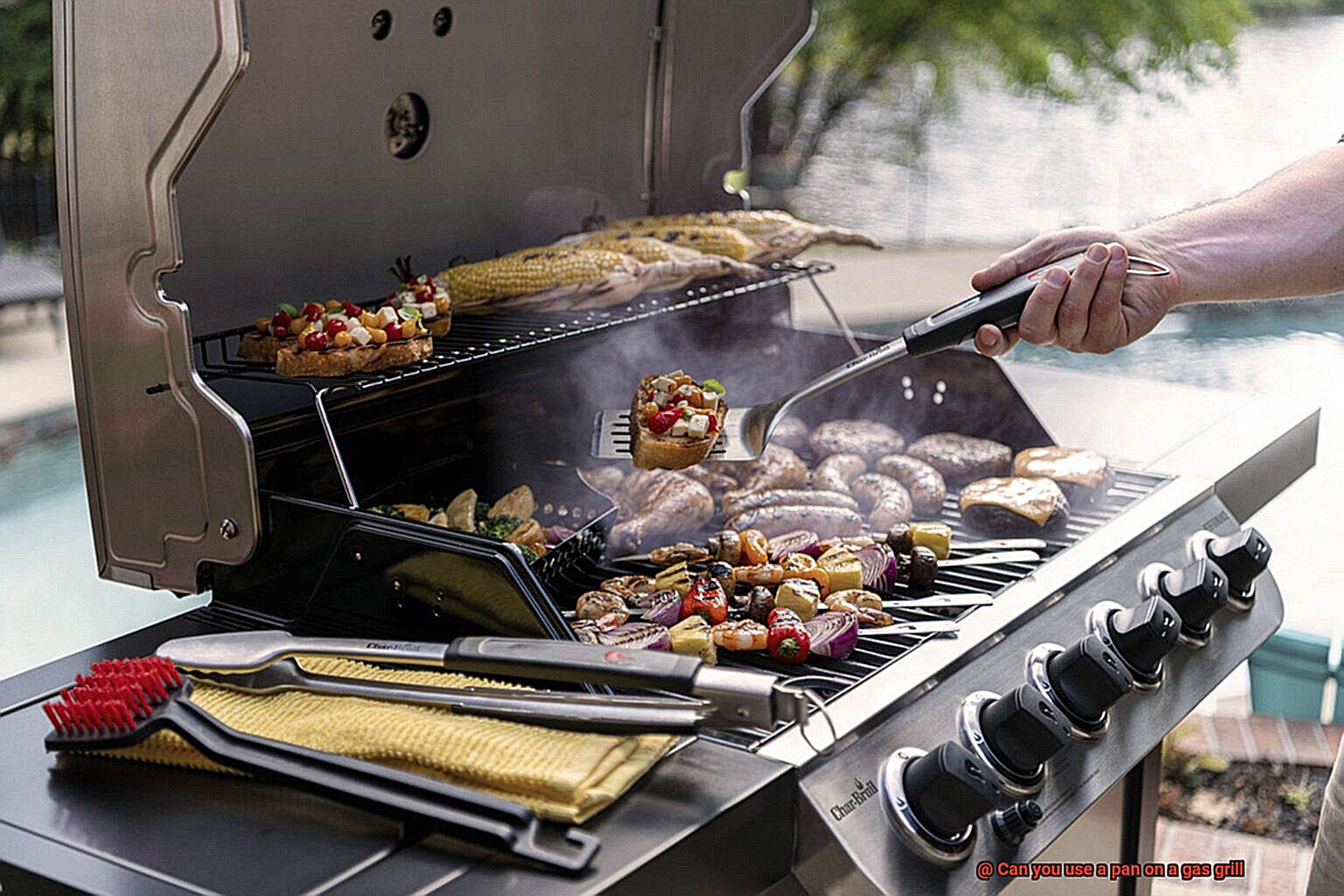
Stainless steel pans are also an excellent choice for grilling. They won’t rust or corrode, and they can handle high temperatures without warping or bending. These pans are lightweight and easy to clean, making them a convenient choice for outdoor cooking. However, stainless steel pans do not retain heat as well as cast iron, so they may not be the best choice for searing meat.
Aluminum
Aluminum pans are lightweight and conduct heat well, making them a popular choice for grilling. They heat up quickly, making them ideal for cooking food that requires fast and even heating.
However, aluminum pans can be prone to warping at high temperatures, so it is important to choose a heavy-duty aluminum pan if you plan on using it on a gas grill.
Disposable Aluminum Foil
If you want a hassle-free option, consider using a disposable aluminum foil pan. These pans are lightweight and inexpensive, making them an excellent choice for outdoor cooking. They are also versatile and can be used for a wide range of foods, from vegetables to meats. However, they are not as durable as other types of pans and are not suitable for use with acidic foods.
Ceramic
Ceramic pans are non-stick and can be used on the grill, but they are not as durable as cast iron or stainless steel. They come in many different colors and designs which make them an attractive option.
Ceramic pans are perfect for cooking delicate foods like fish or vegetables. However, they can crack or break if exposed to sudden temperature changes.
It’s important to note that non-stick pans should be avoided when grilling because the high heat can damage the coating and release toxic fumes. Additionally, avoid using pans with plastic handles as they can melt or catch fire on a hot grill.
Benefits of Using a Cast Iron Skillet on a Gas Grill
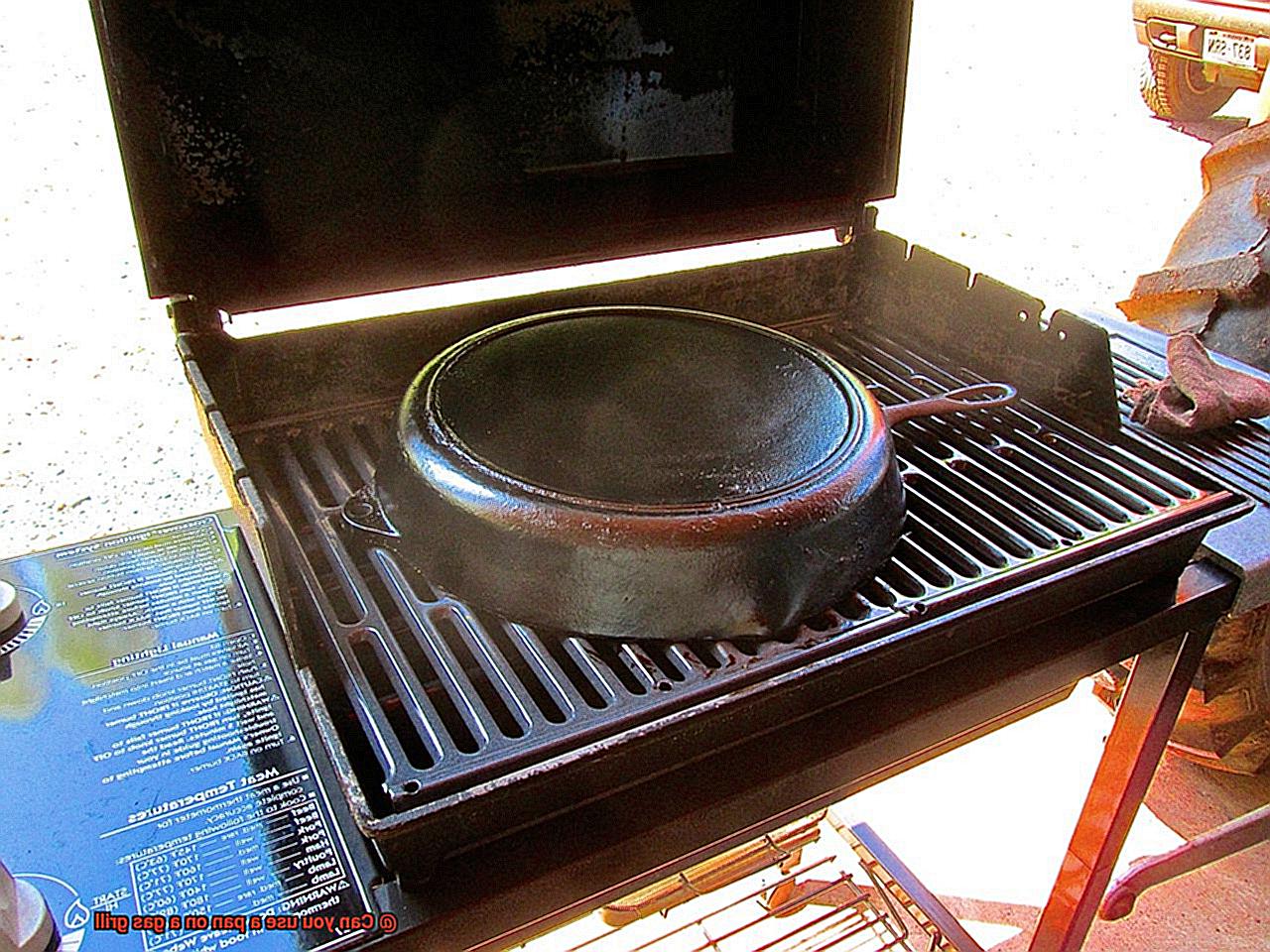
If so, it’s time to add a cast iron skillet to your gas grill. Not only does it provide versatility, even cooking, enhanced flavor, and easy cleaning, but it also takes your grilling game to the next level.
Firstly, let’s talk about versatility. With a cast iron skillet, you can cook anything from vegetables and seafood to meat and poultry. You can even use it to prepare baked dishes such as casseroles, pies, and bread. This means you’ll have more options to impress your guests with than just the usual burgers and hot dogs.
In addition to versatility, using a cast iron skillet on your gas grill ensures even cooking. The skillet’s ability to distribute heat evenly means that your food will cook perfectly every time. Say goodbye to overcooked or undercooked food and hello to juicy and perfectly cooked meals.
But wait, there’s more. Using a cast iron skillet also enhances the flavor of your food. Its porous surface allows it to absorb and retain flavors from previous meals, adding richness and complexity to your current dish. Your taste buds will be thanking you for the explosion of flavors.
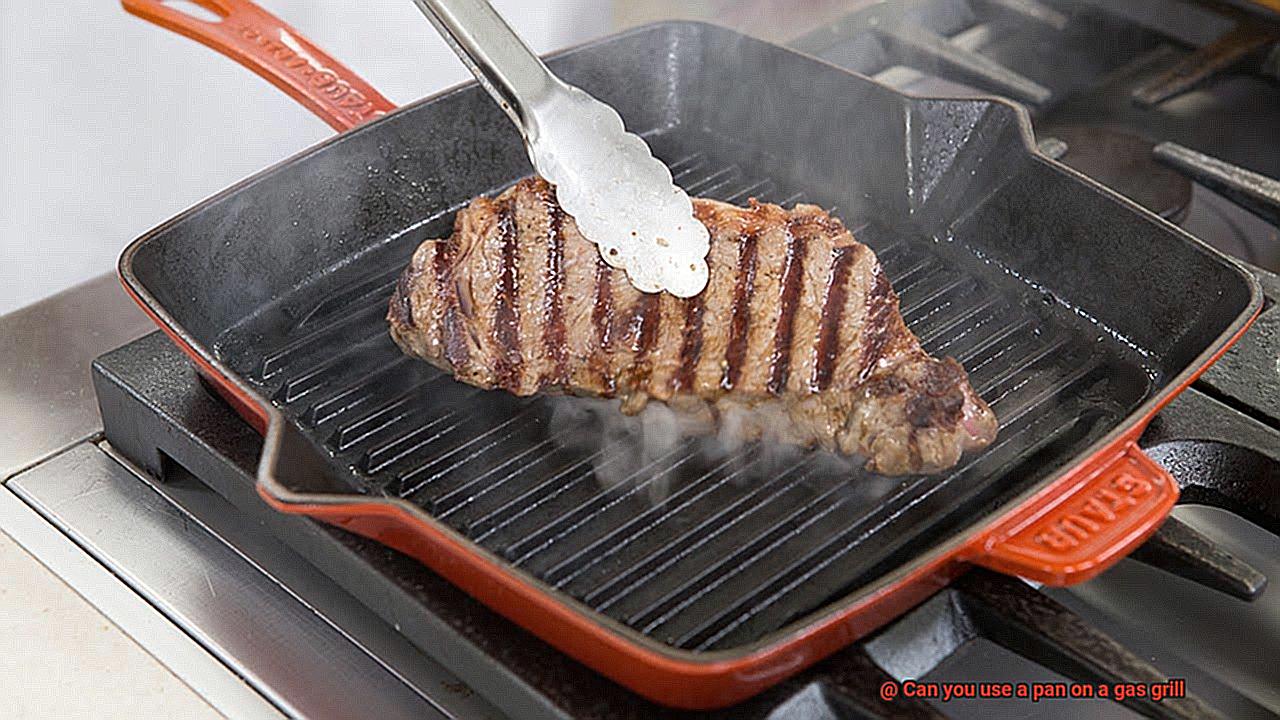
Lastly, cleaning a cast iron skillet is easier than you may think. While proper caring is important, cleaning it after use is straightforward. Plus, the more you use it, the better seasoned it becomes, making cleaning even easier in the future.
Advantages of Using Disposable Aluminum Foil Pans on a Gas Grill
Look no further than disposable aluminum foil pans. As an expert on the subject, I can tell you that these pans can revolutionize your grilling experience by providing numerous advantages.
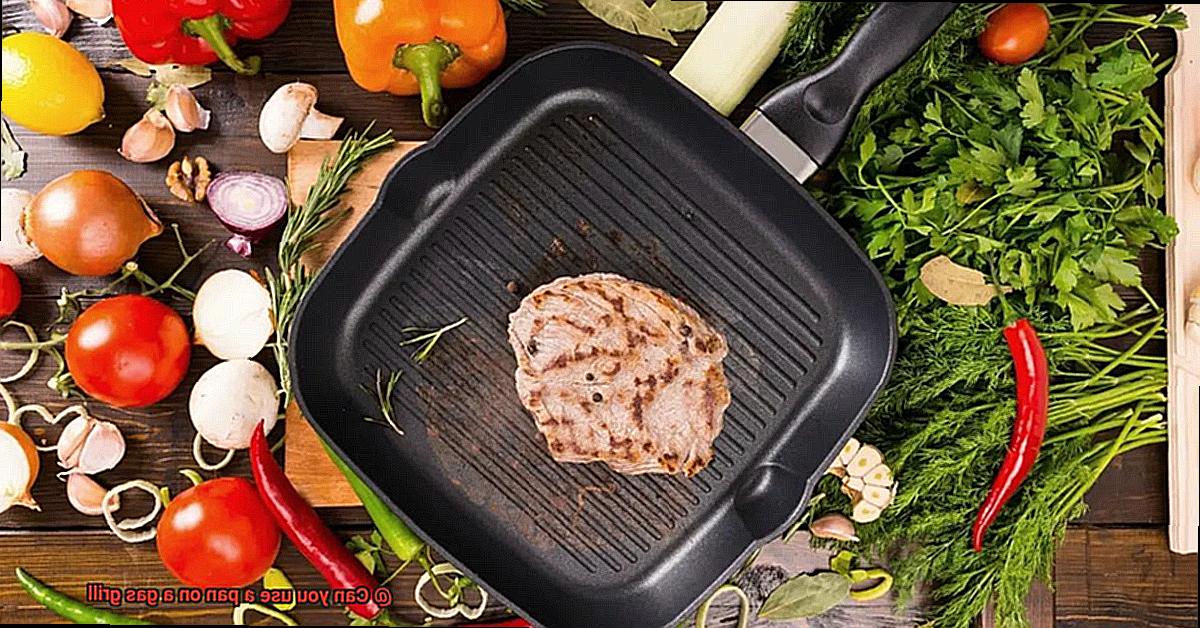
Firstly, let’s talk about clean-up. Nobody enjoys spending hours scrubbing the grill grates after a long day of grilling. With disposable aluminum foil pans, you can say goodbye to this tedious chore. Simply toss the pan in the trash after use and enjoy more time relaxing and savoring your tasty meal.
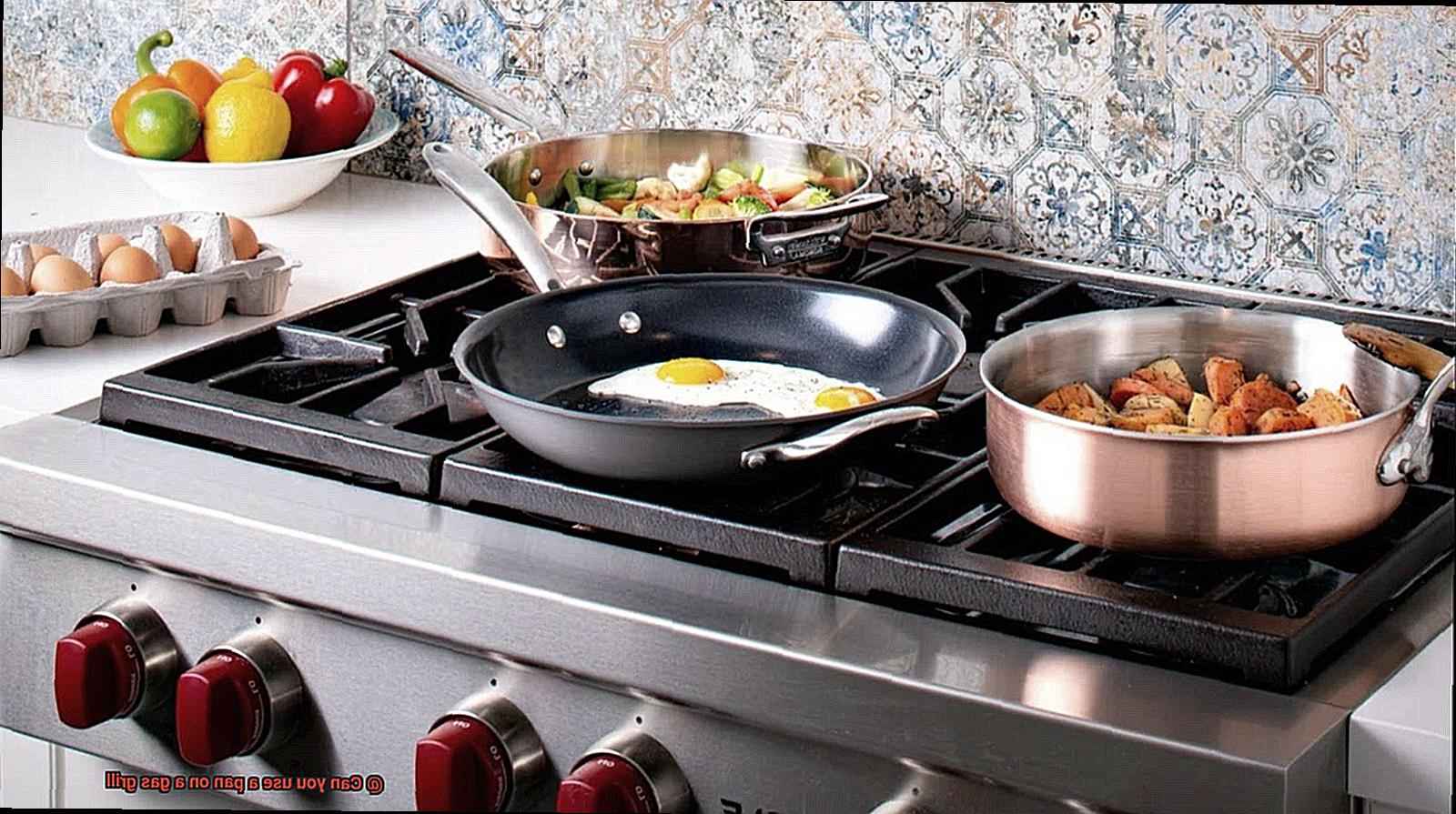
But that’s not all. These pans can also help prevent flare-ups on the grill. Grease and fat from your food can drip down onto the burners or briquettes, causing flames to shoot up and potentially burn your food. By using a pan, you contain the grease, preventing it from coming into contact with the heat source and ensuring a safer grilling experience overall.
Disposable aluminum foil pans also offer excellent temperature control. They are perfect for cooking delicate items like fish or vegetables that require lower heat. By placing the pan on the cooler side of the grill and adjusting the heat accordingly, you can maintain a consistent temperature and achieve perfectly cooked dishes every time.
Lastly, using these pans can actually save you money in the long run by prolonging the life of your grill grates. Oils and marinades can build up on the grates over time, causing them to deteriorate and eventually need replacement. By using pans, you protect your grates from direct contact with food and extend their lifespan.
Potential Drawbacks of Using Plastic-Coated or Thin Pans on a Gas Grill
Grilling is an art form that requires both skill and the right tools for the job. While using a pan may seem like a convenient way to cook certain foods, not all pans are created equal. In fact, using plastic-coated or thin pans on a gas grill can pose potential drawbacks and safety hazards.
Let’s start with plastic-coated pans. At first glance, they seem like a great idea with their non-stick surface making cleanup a breeze. However, when exposed to high heat on a gas grill, the plastic coating can melt or even catch fire. This not only ruins your food but can also release harmful chemicals into the air, posing a significant health risk.
Now onto thin pans. They may be affordable and lightweight, but they’re not always the best option for grilling. When exposed to high heat on a gas grill, thin pans can warp or even melt. This not only ruins the pan but also creates a dangerous situation as hot oil or food spills out onto the grill or cook.
To avoid these potential drawbacks and hazards, it’s crucial to choose pans that are specifically designed for use on a gas grill and made from appropriate materials such as cast iron or stainless steel. These materials can withstand high heat without warping or melting, ensuring safe and effective cooking.
Tips for Safely and Effectively Cooking with Pans on a Gas Grill
It’s important to prioritize safety before you start. A clean grill and the right-sized pan are essential. Follow these tips to ensure you’re cooking safely and effectively.
Choose the Right Pan
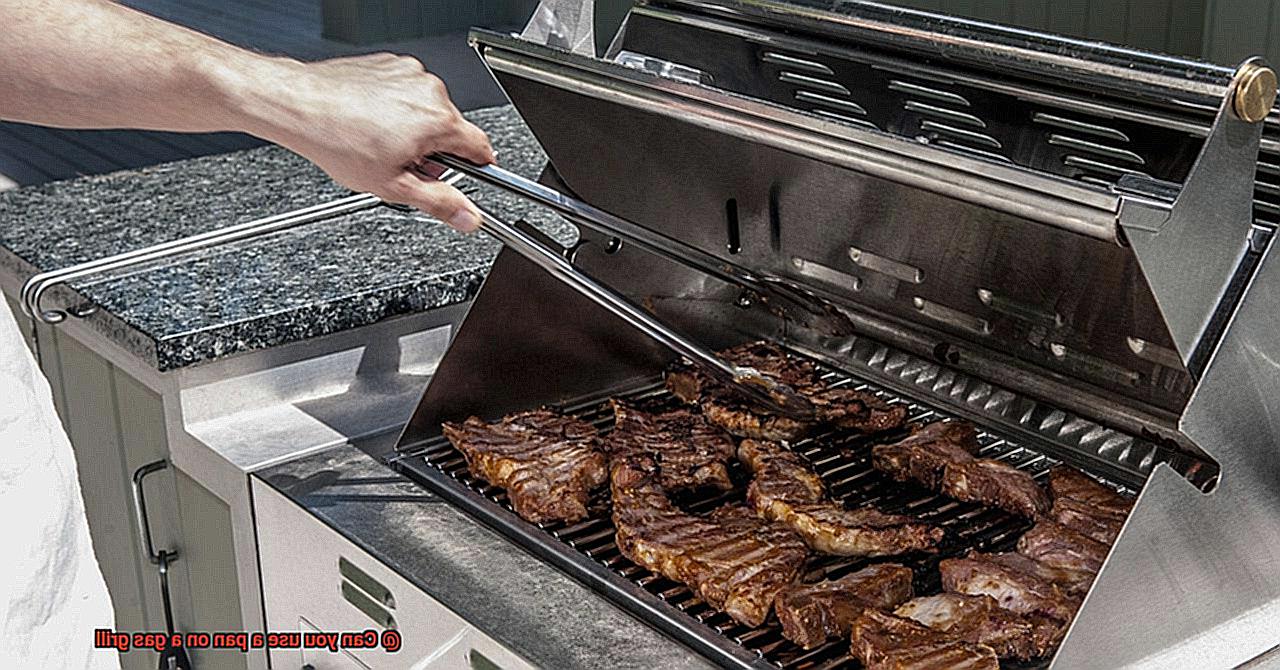
When it comes to cooking with pans on a gas grill, not all pans are created equal. Choose a pan that is specifically designed for high heat cooking, such as a cast iron skillet or stainless steel pan. These materials can withstand the high temperatures of a gas grill and distribute heat evenly for even cooking.
Preheat Your Pan
Preheating your pan ensures that your food cooks evenly and doesn’t stick to the pan. Simply place the pan on the grill and let it heat up for a few minutes before adding your ingredients. This is a crucial step to achieve delicious meals.
Use the Right Amount of Oil
Using the right amount of oil is essential when cooking with a pan on a gas grill. Use just enough oil to coat the bottom of the pan and prevent sticking, but not too much that it causes flare-ups or dangerous situations. This will help you achieve perfectly cooked meals without any disasters.
Keep an Eye on Your Food
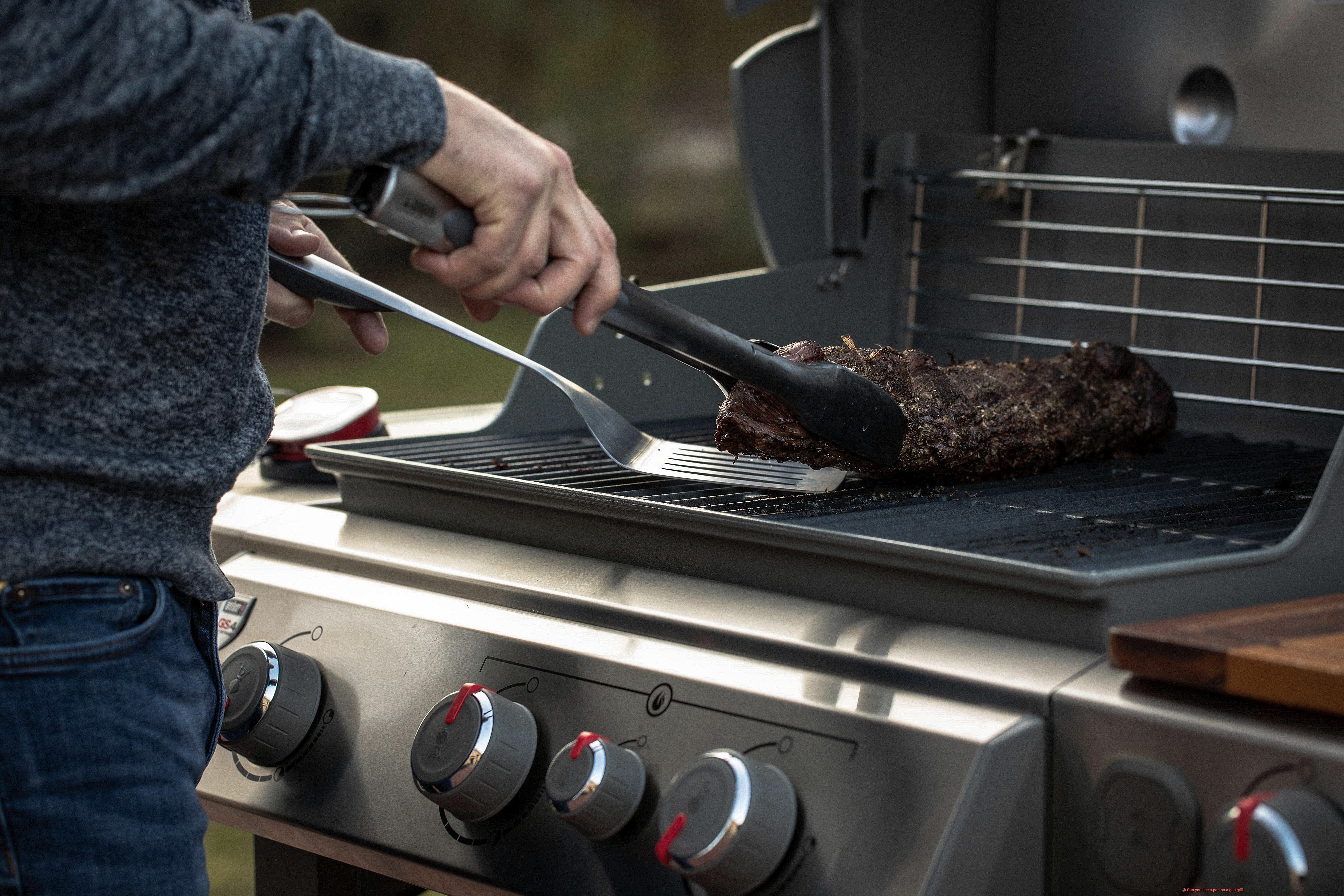
Gas grills can get very hot, so it’s important to keep an eye on your food at all times. Use a thermometer to monitor the temperature of your food and adjust the heat as needed to prevent burning or overcooking your food.
Handle Hot Pans with Care
Always use caution when handling hot pans on a gas grill. Use oven mitts or other protective gear to avoid burns or other injuries. Remember, safety first.
How to Clean and Maintain Your Pan After Use
Cooking with a pan on a gas grill is a great way to add flavor to your food. However, it’s important to clean and maintain your pan after use to ensure its longevity. Here are five sub-sections that will guide you on how to clean and maintain your pan after use.
Let it cool down completely
Before attempting to clean your pan, make sure it has cooled down completely. Cleaning a hot pan can be dangerous and may damage the pan’s surface.
Once it has cooled down, use a soft sponge or brush with warm soapy water to gently scrub away any food residue. Avoid using harsh abrasive cleaners or steel wool, as these can scratch and damage the surface of the pan.
Soak and scrub stubborn stains
For tough stains, soak your pan in warm soapy water for a few hours before scrubbing again. If that doesn’t work, sprinkle baking soda on the pan and let it sit for a few minutes before scrubbing.
Be sure to rinse the pan thoroughly with water and dry it completely before storing it away. Leaving a wet pan can lead to rust and other forms of corrosion over time.
Season your pan regularly
To maintain its non-stick surface and prevent rusting, season your pan regularly with oil. Coat the pan with a thin layer of oil and heat it on the grill for a few minutes until the oil starts to smoke. Let the pan cool down before wiping away any excess oil with a paper towel.
Use wooden or silicone utensils
To maintain your pan’s non-stick coating, avoid using metal utensils when cooking with it. Instead, opt for wooden or silicone utensils that won’t scratch or damage the surface.
Avoid cooking highly acidic foods
Highly acidic foods such as tomatoes or citrus fruits can wear down the non-stick coating over time. It’s best to avoid cooking these types of foods in non-stick pans. If you do need to cook them, use a stainless steel or cast iron pan instead.
anfr7_ruKl8″ >
Conclusion
In conclusion, incorporating a pan into your gas grill setup can revolutionize your outdoor cooking experience. Not only does it expand your culinary repertoire, but it also simplifies the process of grilling delicate foods. Whether you’re looking to whip up some veggies or sear a steak, using a pan on your gas grill opens up endless possibilities.
Cast iron skillets are an excellent choice for their durability and heat resistance. Stainless steel pans are also great for grilling, while aluminum pans distribute heat evenly and quickly. For those who prefer a no-fuss approach, disposable aluminum foil pans are perfect for hassle-free outdoor cooking. And for those who want to add some style to their dishes, ceramic pans are a beautiful option.
However, safety should always come first when using a pan on your gas grill. Preheating your pan, using the right amount of oil, monitoring food temperature, and handling hot pans with care are all crucial steps to ensure safe and effective cooking.
After use, proper cleaning and maintenance will keep your pan in top condition for years to come.
Letting the pan cool down completely before cleaning it, soaking stubborn stains, seasoning regularly with oil, using wooden or silicone utensils, and avoiding highly acidic foods are all essential steps in maintaining its non-stick surface.
Overall, incorporating a pan into your gas grill setup adds versatility and convenience to outdoor cooking while ensuring perfectly cooked meals every time.

